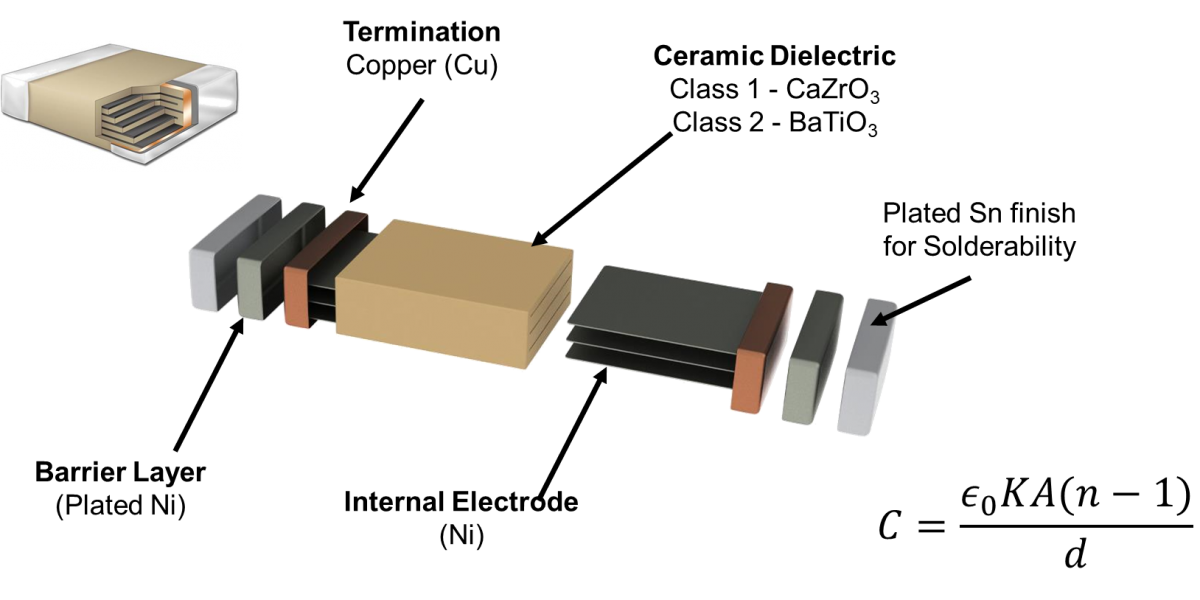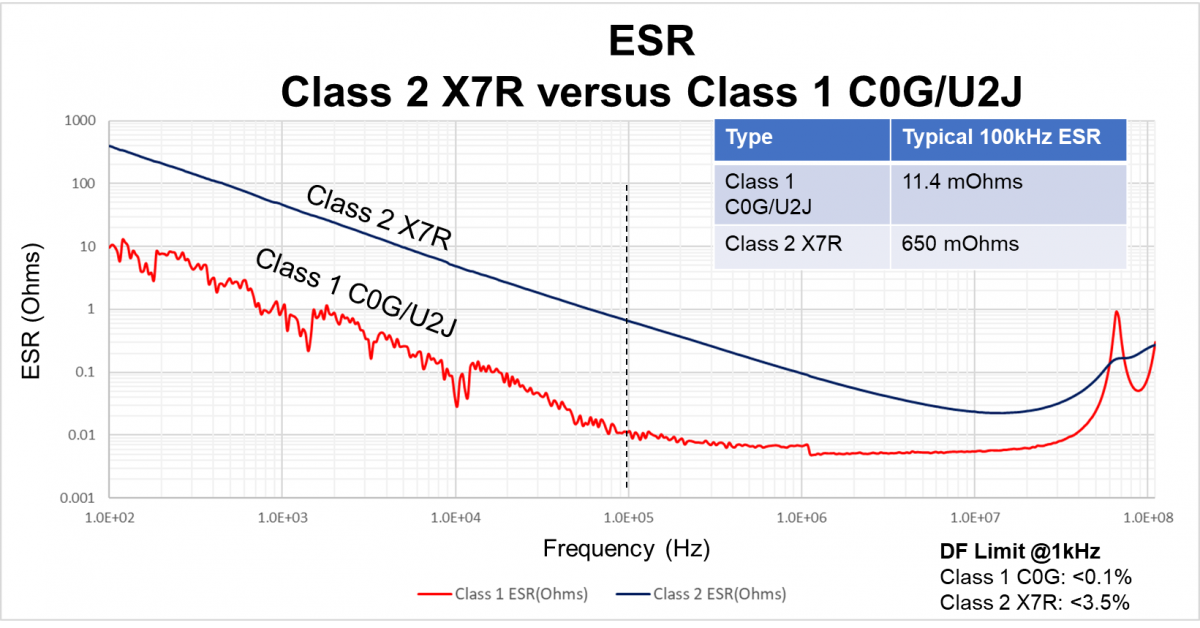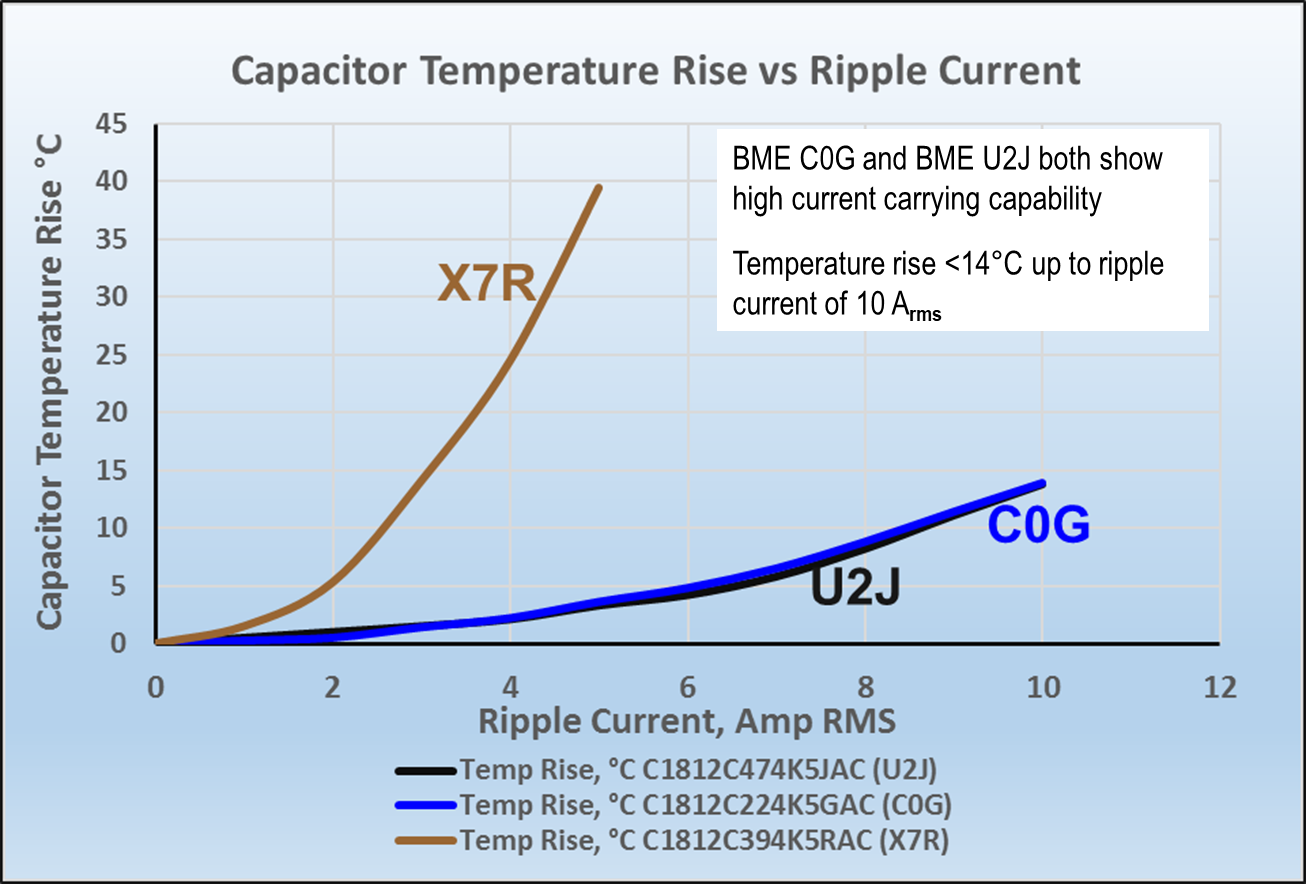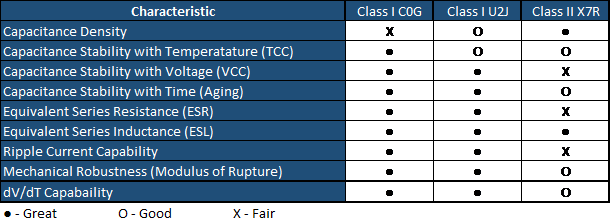The amount of data we’re generating today is mind-blowing. In the last couple of years 90 percent of the data in the world was generated, and we’re creating over 2.5 quintillion bytes of data every day. This means that there will be 40x more bytes of data than there are stars in the observable universe by 2020! All this data relies on electrical power. And, the Internet of things, and adoption of hybrid-electric vehicles is only going to accelerate this demand.
Engineers are continually seeking ways to make devices more efficient to conserve the amount of power we need. Switching semiconductor devices have been the main focus for increasing efficiency and power density as they significantly contribute towards dynamic and static losses in any power system. However, it is becoming ever more expensive and challenging to achieve incremental improvements. Capacitors are increasingly being recognized for having the potential to improve efficiency and, therefore, power density.
There are three areas in power design where capacitors can positively impact the efficiency of the system, each have a slightly different requirement from the capacitor:
Combining these requirements demands a capacitor with very low loss, high ripple current handling capabilities, the ability to withstand high voltages and accept higher operating temperatures while exhibiting stable capacitance and high mechanical stability. Let’s look at which capacitor packages can deliver this.
MLCCs exhibit key properties that are ideal for snubber, DC-LINK, and resonant applications. MLCCs are built from alternating layers of ceramic dielectric and metal electrodes and are predominantly manufactured using Base Metal Electrodes (BME). They typically have Nickel electrode s and a CaZrO3 dielectric for Class I or BaTiO3 dielectric for Class II as seen in figure 1.

Figure 1: Exploded View of a Base Metal Electrode MLCC
Dielectrics are classified by their capacitance stability over temperature. Class I – C0G, NPO, U2J – contains the most temperature stable dielectrics, but these have the lowest dielectric constant (K). Therefore, a higher volume is needed to achieve the same capacitance as Class II MLCC types.
Class II dielectric materials – X7R and X5R – have mid-range temperature stability and values of K. Class II MLCCs provide a much higher capacitance per unit volume compared to Class I. But, as Class II MLCCs use a BaTiO3 dielectric there are some characteristics that can drastically influence their use in power applications. For example, capacitance can be affected by the operating temperature, applied DC bias, and time after last heat (aging).
The Temperature Coefficient of Capacitance (TCC) is the stability of capacitance vs temperature and is determined by the Electronics Industries Alliance (EIA) dielectric classification such as “X7R”. X7R has an operating temperature range of -55oC to 125oC with maximum capacitance limits of ±15%. Whereas, X5R has an operating temperature range of -55oC to 85oC with the same ±15% capacitance limits.
Stability of capacitance vs voltage (VCC) has no EIA definition. However, users can see a decrease in capacitance of up to 80% at rated voltage for higher capacitance Class II MLCCs. This VCC characteristic also varies widely between manufacturers.
In addition, capacitance can also decrease due to aging – or time after last heat. It is usually between 2-5% per decade hour after the last heat above 130oC, which is typically when soldering the parts during the manufacturing process.
In comparison, Class I dielectrics are much more stable, making them the perfect choice for resonant applications such as wireless charging circuits and LLC resonant converters. For example, C0G has a slight capacitance shift of 30 ppm/°C, or 0.3% at 125oC, while U2J has 750 ppm/°C or 7.5% at 125oC but is linear and predictable. Both C0G and U2J have negligible capacitance change vs DC bias and almost no change vs time (aging).
Equivalent Series Resistance (ESR) is also a vital characteristic to consider for capacitors in power applications due to i2R losses. BaTiO3 is a ferroelectric material, and as such it can create domain regions within the dielectric and domain wall heating and higher ESR compared to Class I dielectrics. It’s common for Class II MLCCs to have an ESR that is up to two orders of magnitude higher than Class I MLCCs. An example of ESR for Class I C0G/U2J MLCCs and Class II X7R can be seen in figure 2.

Figure 2: ESR Comparison Between Class II X7R and Class I C0G/U2J
High ESR along with high AC current in power applications results in excessive heating. Figure 3 shows that X7R increases by 40oC with just 5Arms, whereas C0G and U2J dielectrics experience a self-temperature rise of approximately 15oC at 10Arms.

Figure 3: Ripple Current Comparison Between Class II X7R and Class I C0G/U2J

Figure 4: Key Characteristics Comparison Between Class II X7R and Class I C0G/U2J
It is clear to see that Class I BME dielectric based MLCCs including C0G and U2J have high temperature stability, low loss and high ripple current capability, and stand out as the ideal choice for high power density applications. Their performance is predictable, and designers can achieve fine tolerances.
At KEMET we have created numerous product ranges specifically designed to improve power conversion efficiencies. These include C0G High Voltage Commercial and Automotive Grades series of capacitors, the surface mount KC-LINK 3640 220nF 500V ceramic capacitor, and KONNEKT – an innovative leadless multi-chip solution design for high efficiency and high-density power applications.
For more information about these product ranges read part 2 of the blog, where we’ll explore these technologies at greater length.